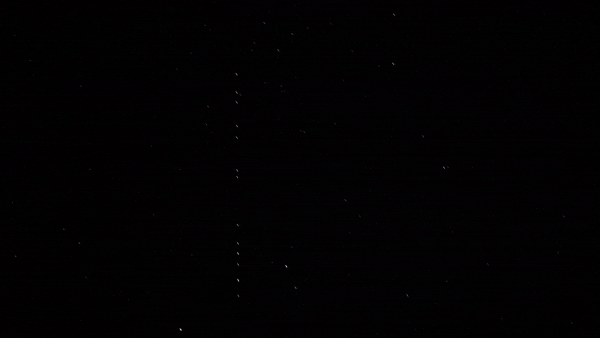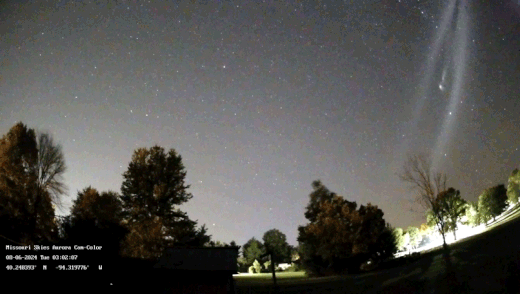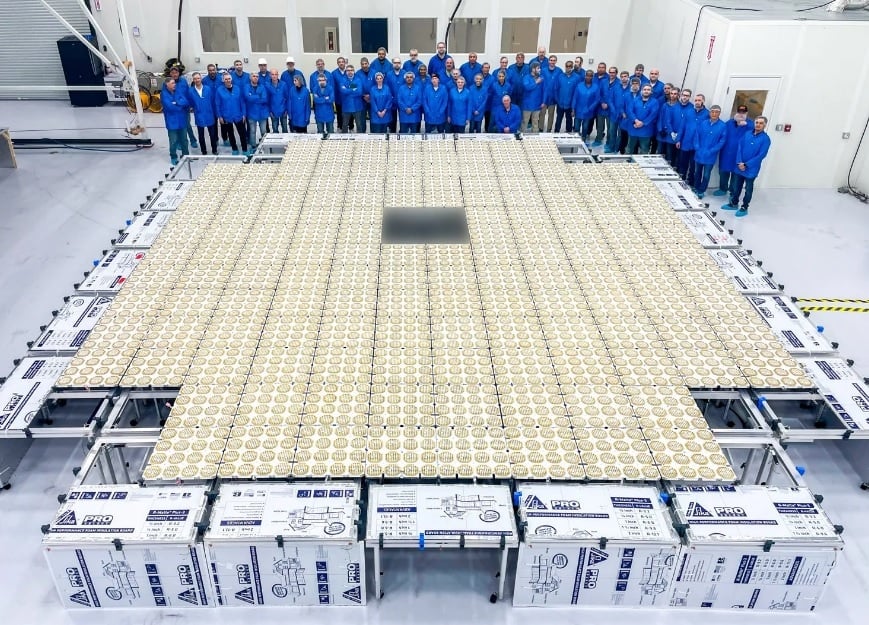With 'Thousand Sails,' China joins the race to fill up Low Earth Orbit with mega-satellite constellations.
It's getting crowded up there in Low Earth orbit (LEO). By now, flocks of Starlinks have become a familiar sight, and the bane of astrophotographers as the 'vermin of the skies.' Now, several new competitors have joined the fray, with more waiting in the wings.
Perhaps, you've seen one of these curious-looking 'satellite trains,' and wondered what they were. Certainly, the advent of satellite trains courtesy of Starlink have added to the annals of purported UFO videos shot via smartphone across YouTube. Now, more agencies worldwide are getting into the game in 2024, assuring that the next 'star' you wish on at dusk may, in fact, be an artificial satellite.
Approaching An Artificial Sky
Streaks and trails due to the increasing number of Starlinks in orbit have also become a standard feature in modern deep sky images. While techniques to remove these have been pioneered by astrophotographers, these will continue to impact deep sky astronomy. This impact extends to sky surveys soon set to come online such as the Vera Rubin Observatory, set to see first light early next year in 2025.
SpaceX has implemented mitigation plans in response, including use of sun visors on first generation satellites, diffuse 'dielectric mirror' material on newer Version 2 (V2) platforms, and angling solar arrays. These have seen some success. Certainly, spotters have noted that the new Version 2's have a bluer tint, and seem to shine at magnitude +7 once they're boosted into their respective orbital slots. This is near the +7 magnitude threshold called for by the National Science Foundation (NSF) and the International Astronomical Union (IAU).
Radio noise from these new communications satellite constellations is also an issue that astronomers now have to contend with. LOFAR (The Netherlands Institute for Astronomy's Low Frequency Array) notes that "new observations with the LOFAR radio telescope...have shown that the second generation 'V2-mini' Starlink satellites emit up to 32 brighter unintended radio waves than satellites from the previous generation."
Enter China's 'Thousand Sails' Initiative
China also recently joined the competition in LEO, with the launch of a Long March-6 rocket from Taiyuan Satellite Launch Center with 18 satellites for Shanghai Spacecom Satellite Technology (SSST). This is part of the company's 'Thousand Sails' initiative.
Dubbed China's answer to Starlink, This will see an initial 1,296 satellites for the constellation placed in orbit by 2027. The company also has plans to expand the network to 12,000 satellites into the 2030s. This first batch went into a polar (sun-synchronous) orbit, and the resulting satellite train was spotted in orbit shortly after launch.
And there's more in store. China also launched a Long March 6 rocket on September 5th, with 10 new satellites for Geely Group Automotive. These are part of the company's effort to build a communication network for autonomous vehicles.
As a follow-on this month, China also launched a Long March-6 rocket on October 15thwith another batch of 18 satellites headed into a polar orbit. This group is also part of the Thousand Sails constellation. Satellite spotters have already tracked these in orbit, with an estimated brightness of up the +4th magnitude when near the zenith on a visible pass. Keep in mind, China isn't beholden to any obligations to mitigate the impact that satellite constellations might have on the night sky...nor do any formal international standards exist.
More Mega Satellite Constellations to Come
Not to be outdone, SpaceX is putting up more than just Starlink. Last month, SpaceX launched a Falcon 9 rocket on September 12th, with the first five Bluebird satellites. These are ASTMobile's follow-on to the BlueWalker-3 test satellite, still in orbit. With a phased-array antenna 10-meters across when deployed, BlueWalker-3 reaches magnitude 0. The company plans to put 110 of these potentially brilliant Bluebirds in orbit over the next few years.
OneWeb is also still putting satellites in orbit. The ongoing Russia-Ukraine War has forced the company to forego Soyuz launches. Instead, OneWeb now relies on competitor SpaceX to get into orbit.
The OneWeb satellite constellation currently hosts 660 satellites in orbit, right around the initial target number set by the company Eutelsat-OneWeb for nominal operation. The company began offering services through residential providers last year, including Hughesnet, Viasat and ironically, Starlink.
Starlink's current status is 7,125 satellites in orbit, with 23 more planned tonight with the launch of Starlink Group 6-61 from the Cape. 12,000 satellites in orbit are planned for in the coming years, and the constellation could extend to a total of 34,400 satellites in future years.
Not to be outdone, the Unites States' Department of Defense is putting its own dedicated satellite constellation in space. Dubbed Starshield, the network already has 73 satellites in orbit, and a total of more than a 100 are planned. As expected, the DoD is already shaping up to be Starlink's (and SpaceX's) biggest customer.
Hunting Satellite Trains
Other bright reflectors are making themselves seen in the night sky as well. ACS-3 (the Advanced Composite Solar Sail System) was launched this past April on a Rocket Lab Electron rocket. The mission successfully unfurled this summer on August 29th. ACS-3 is the latest in a batch of satellites to attempt to test solar sail technologies in orbit. Mission planners could use this tech on future missions for maneuvering, propulsion or reentry disposal. Previous missions, including NanoSail-D2 and Planetary Society's Light Sail have struggled with this tech, demonstrating just how difficult it's turning out to be.
ACS-3 is definitely tumbling: we've seen it flare up to 0 magnitude (as bright as Vega) on a good pass. This seems to be very angle dependent.
You can track these missions and more on Heavens-Above. The leaders for the first two batches of respective Thousand Sail groups are 2024-140A and 2024-145A. Plus, Heavens-Above tracks Starlink batches (which are once again going up at a furious rate) on a dedicated page. We saw the most recently launched Starlink Group Batch 8-19 this past weekend… and that was from under the bright lights of downtown Bristol, Tennessee.
The Promise and Peril of Mega-Sat Constellations
To be sure, we're a huge consumer of roaming WiFi. If we can continue our career and online exploits from a remote basecamp, then that's a good thing… but there also needs to be oversight when it comes to what we're collectively doing to our night sky as a resource.
Are we headed towards a future where artificial stars in the night sky outnumber real ones? Perhaps, the best thing that amateur satellite trackers can do now, is to chronicle what's happening, as the Anthropocene era leaves its mark on a brave new night sky.
 Universe Today
Universe Today





